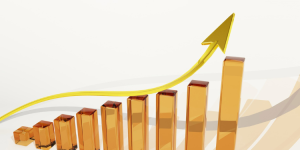UK Economy Shows Resilience as Growth Exceeds Expectations: Is a Turning Point Near?

Anúncios
Introduction: A Promising Sign of Recovery for the UK Economy 🌅
The UK economy is beginning to turn a corner, declared Chancellor Rachel Reeves following the release of stronger-than-expected growth figures for the first quarter of 2025.
With a growth rate of 0.7% between January and March—surpassing the forecasted 0.6%, this momentum is being welcomed cautiously by policymakers, economists, and businesses alike.
While this growth suggests a rebound from previous stagnation, the broader economic landscape remains marked by significant challenges including rising taxes, ongoing tariff pressures, and the persistent cost of living crisis affecting millions of families.
Nevertheless, the data paints a picture of an economy demonstrating surprising resilience in uncertain times, a narrative echoed by experts who note the critical roles of consumer spending and business investment.
Anúncios

Growth Beats Expectations But Future Risks Remain ⚖️📉
The UK’s economy grew at a rate of 0.7% in the first quarter of 2025, a figure that outpaced the 0.6% growth forecasted by analysts.
This growth was driven primarily by increases in consumer spending and business investment, marking a welcome shift after a sluggish end to the previous year.
Anúncios
However, this positive momentum was recorded just before the imposition of US import tariffs and the rise in employer National Insurance (NI) contributions in April, factors that have since introduced additional pressures on growth forecasts.
Economists warn that the robust growth seen may be temporary, shaped in part by companies and consumers accelerating activity ahead of expected tariff and tax changes.
Chancellor Rachel Reeves: Cautious Optimism Amid Economic Pressures 💬📊
Chancellor Reeves expressed optimism about the UK’s current economic trajectory, emphasizing that the country was poised to be the fastest-growing economy in the G7 during the first quarter of the year.
She also acknowledged the ongoing cost of living pressures many families face and the work still to be done to support the broader population.
This balanced view captures both the promise shown in the figures and the real challenges experienced across the country, particularly among lower-income households and small businesses grappling with rising operational costs.
Political Responses and Economic Debate 🏛️⚔️
Despite the encouraging figures, not all political voices share the same enthusiasm.
Shadow Chancellor Mel Stride warned that it was premature to celebrate, suggesting that the UK economy’s resilience was yet to be fully tested.
Stride criticized the recent increases in employer National Insurance contributions, describing them as a “jobs tax” that threatens to undermine economic growth.
Similarly, Liberal Democrat Treasury spokesperson Daisy Cooper acknowledged the positive news but cautioned against complacency, emphasizing that sustained effort would be required to maintain growth.
Reform UK deputy leader Richard Tice echoed these concerns, highlighting that the full effects of recent tax hikes had yet to materialize and that the outlook could worsen.
Sectoral Insights: Services Lead the Way 📈🏢
| Aspect | Details |
|---|---|
| 📊 Key Sector | Services sector (retail, hospitality, finance) |
| 🚀 Economic Impact | Primary driver of growth in Q1, boosting overall GDP |
| 📈 Consumer & Business Activity | Strong demand and robust activity in key areas |
Moreover, real GDP per capita—a measure of economic output adjusted for population—rose by 0.5% during the same period, reversing two consecutive quarters of decline.
This indicator delivers a more precise depiction of how economic growth is translating into improved living standards for individuals.
Analyst Perspectives: Growth Likely to Slow but Resilience is Key 🔍📉
While the current figures are encouraging, economists caution that the rate of growth is expected to slow in the months ahead.
Paul Dales, Chief UK Economist at Capital Economics, noted that the first quarter’s growth might be as good as it gets for the year, attributing much of the activity to pre-emptive business moves ahead of tariff and tax changes.
Dales also highlighted that export volumes increased by 3.5% during the quarter, following declines in the previous three quarters.
This rebound is a positive sign, indicating that British companies may be regaining competitiveness in international markets despite the challenges posed by global trade tensions.
HSBC’s senior UK economist, Liz Martins, expressed a cautiously optimistic view, emphasizing the nearly 6% quarter-on-quarter rise in business investment and the healthy performance of the services sector beyond just manufacturing or exports.
This suggests that the UK economy’s resilience is not solely dependent on short-term factors but also driven by underlying business confidence and investment.
Business Voices: Navigating Tariffs and Tax Rises ⚙️🏭
The real-world impact of economic shifts is felt keenly by UK businesses, as illustrated by executives interviewed recently.
Annabel Thomas, CEO of Nc’nean Whisky Distillery in Scotland, expressed cautious optimism, noting that her company has decided to absorb the cost of US tariffs to maintain stable prices in American markets.
This approach aims to protect customer loyalty and long-term growth despite short-term financial pressure.
John Inglis, founder of Exactaform, a diamond tool manufacturer with a U.S. factory, described the current business environment as fraught with uncertainty.
With tariffs slicing 10% off margins and tax rises further squeezing profits, critical decisions regarding expansion and operations have been put on hold.
Inglis expressed reluctance to move production to the U.S., citing loyalty to his UK workforce, but acknowledged that rising costs are niggling away at the profit you need to expand.
Interest Rates and Market Reactions 💹🏦
In a recent move, the Bank of England cut UK interest rates from 4.5% to 4.25%, signaling attempts to stimulate the economy further.
Yet, the unexpectedly strong growth figures have moderated expectations for additional rate cuts this year.
Analysts now predict fewer reductions, which has influenced swap rates—a key factor affecting fixed-rate mortgage pricing.
Consequently, mortgage rates might increase slightly, with some lenders, such as TSB, already announcing rate hikes.
This shift could influence consumer borrowing and spending, adding another variable into the complex economic outlook.
Conclusion: A Delicate Balance Between Optimism and Caution ⚖️🌟
The UK’s first-quarter economic growth offers a rare bright spot in an otherwise challenging global economic environment.
Although the headline figure of 0.7% growth provides reasons for optimism, underlying issues such as inflation, tax increases, tariff uncertainties, and cost-of-living pressures remain significant hurdles.
The economy’s resilience, particularly in the services sector and among business investment, offers hope that the UK can navigate these challenges successfully.
However, policymakers, businesses, and consumers alike must remain vigilant and adaptive to shifting economic conditions.
As the UK seeks to maintain momentum, a balance must be struck between encouraging growth and addressing the real pressures facing families and businesses across the country.
For now, the phrase beginning to turn the corner captures the cautiously hopeful mood as the UK charts its economic course through 2025 and beyond. 🚀







